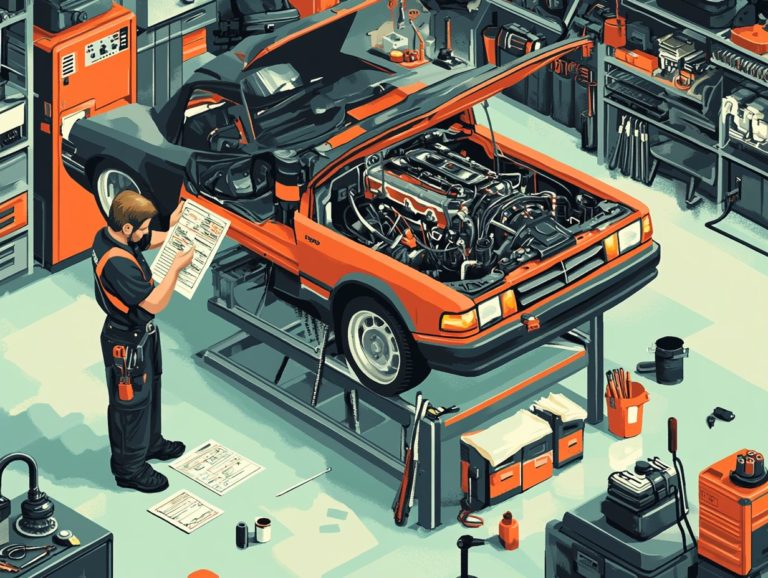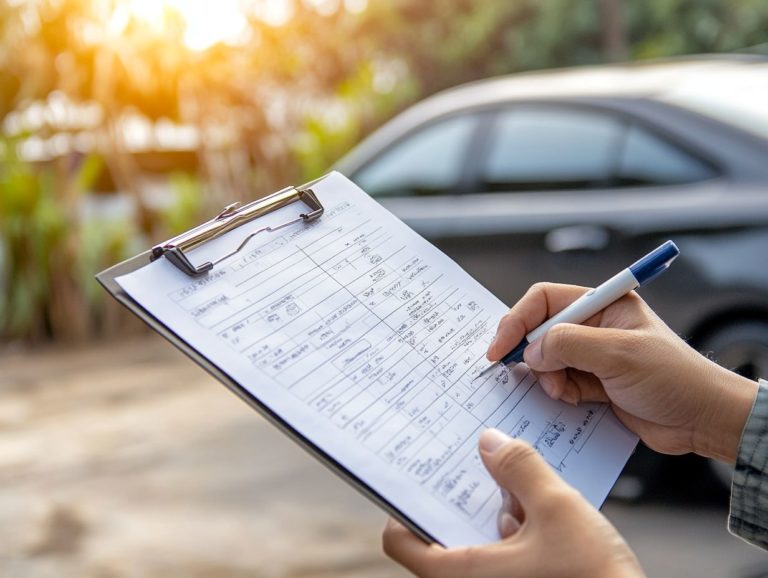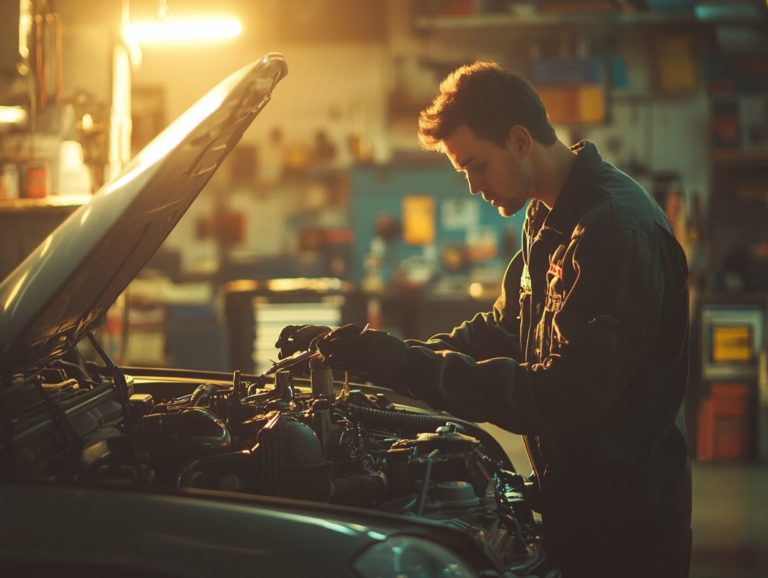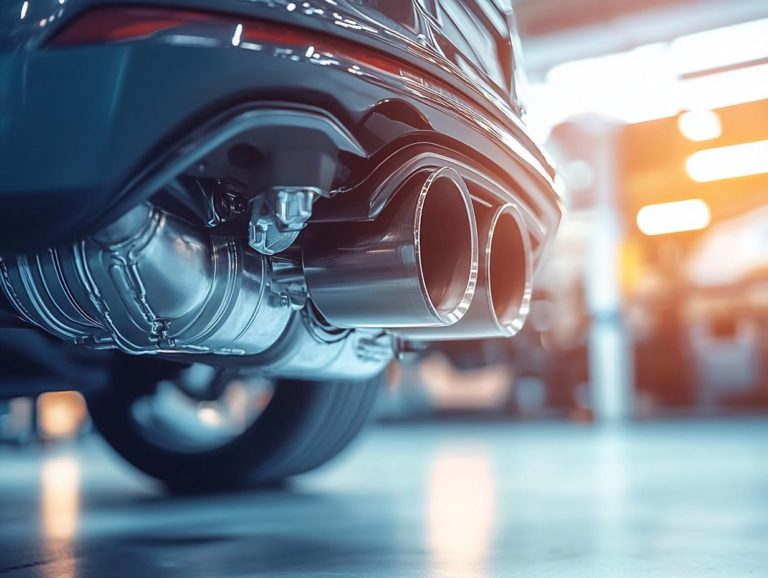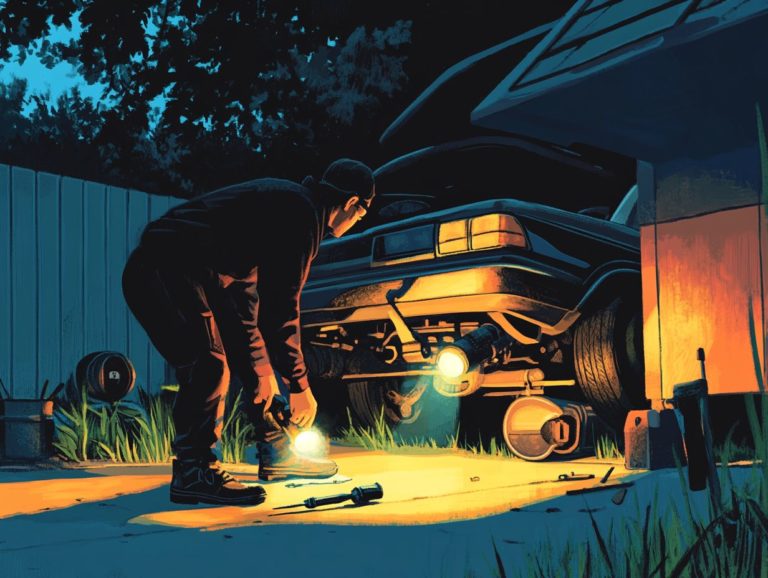The Most Overlooked Items in a Car Inspection
Regular vehicle inspections are essential for ensuring your vehicle s performance and safety. However, many drivers tend to overlook critical components, which can result in costly repairs or, worse yet, dangerous situations.
Let’s explore the most commonly neglected items during vehicle inspections, such as tires, fluid levels, brakes, and air filters. This article also underscores the significance of routine checks, the risks associated with skipping inspections, and the advantages of enlisting professional assistance.
Stay informed and ensure your vehicle runs smoothly!
Contents
- Key Takeaways:
- 1. Tires
- 2. Fluid Levels
- 3. Lights and Signals
- 4. Wipers and Windshield
- 5. Brakes
- 6. Battery
- 7. Air Filters
- 8. Belts and Hoses
- 9. Suspension and Steering
- 10. Exhaust System
- 11. Spark Plugs
- 12. Radiador y Sistema de Refrigeraci n
- 13. Sistema de Aire Acondicionado
- 14. Condici n Interior y Exterior
- 15. Kit de Emergencia
- The Importance of Regular Car Inspections!
- Frequently Asked Questions
- What items do people frequently forget to check during a car inspection?
- Why are these items important to check during a car inspection?
- How often should these items be inspected?
- What are the consequences of neglecting these items?
- How can I remember to check these items during a car inspection?
- What can I do if I don’t feel confident checking these items myself?
Key Takeaways:
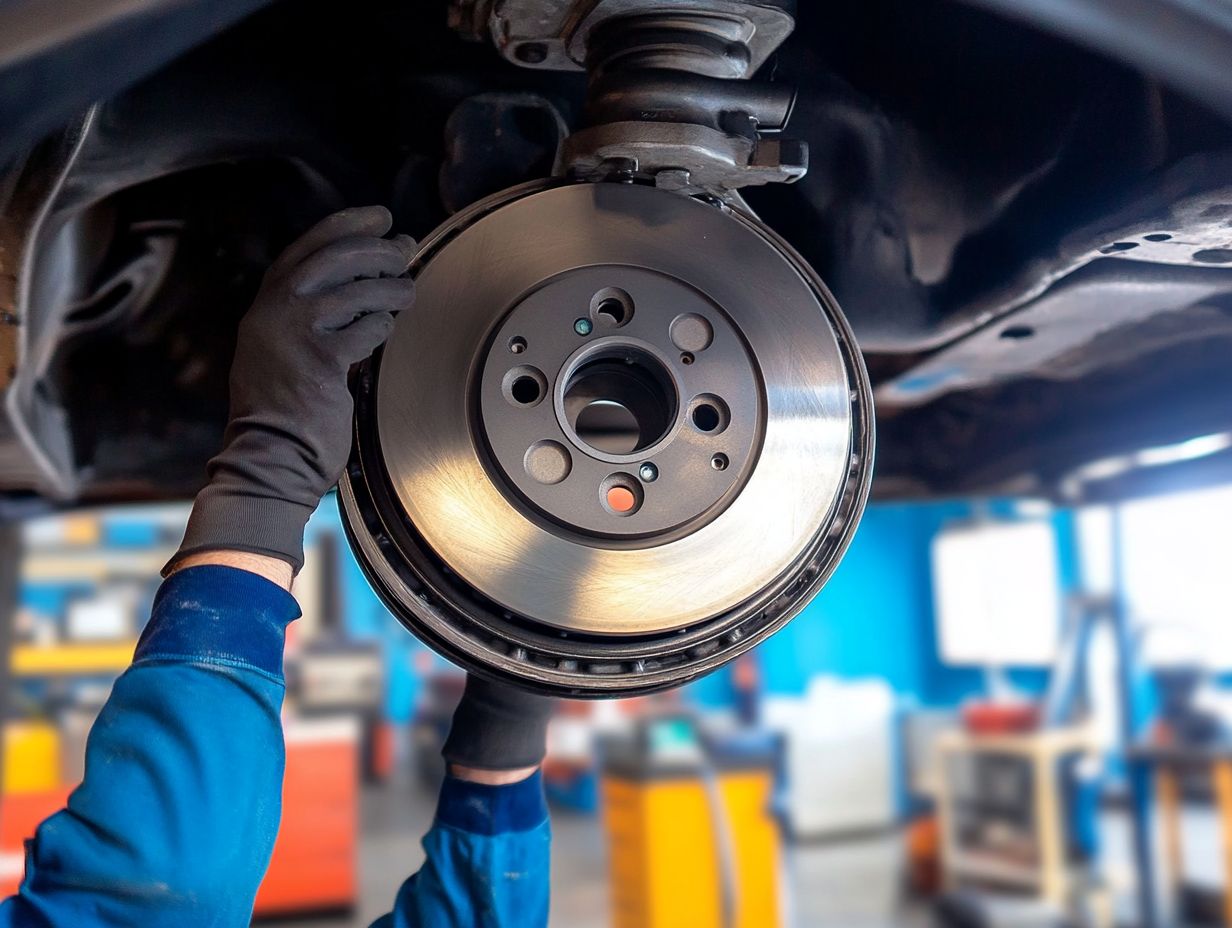
Regular vehicle inspections are crucial for safety and longevity. Skipping an inspection can lead to potential risks and costly repairs. Professional inspections can help identify overlooked items and ensure a thorough assessment of your vehicle’s condition.
1. Tires
Tires are a crucial element of vehicle safety, significantly influencing performance and ensuring safe transport on the road. Regular tire inspections are essential for identifying potential problems that could jeopardize safety.
By adhering to proper maintenance practices, including visual inspections and respecting the working load limit, you help prevent accidents and foster a safety-oriented culture.
It s also important to conduct depth checks frequently. Insufficient tread depth can negatively impact traction and handling, especially in adverse weather conditions. Act now: sidewall inspections can save your life!
By prioritizing tire condition and adopting a comprehensive approach to maintenance, you not only safeguard your own safety but also enhance overall vehicle performance. Well-maintained tires reduce fuel consumption and extend the life of your vehicle, highlighting the intricate relationship between tire care and overall vehicle reliability.
2. Fluid Levels
Maintaining proper fluid levels is essential for optimal vehicle maintenance, as these fluids are crucial for the performance and longevity of various components.
Regular oil changes and vigilant monitoring of brake fluid levels are key to preventing mechanical issues and fostering a culture of safety among drivers.
In addition to engine oil and brake fluid, keeping an eye on coolant and transmission fluid is equally vital. Coolant keeps the engine operating within the correct temperature range, preventing overheating and potential damage.
Likewise, transmission fluid lubricates the moving parts within the transmission, allowing for smooth gear shifts and enhancing drivability. When fluid levels dip too low or become contaminated, you risk decreased performance and increased wear. By conducting regular checks, you can avoid costly repairs and ensure your vehicle remains a safe and reliable companion on the road.
3. Lights and Signals
Properly functioning lights and signals are essential safety features, ensuring both visibility and effective communication with other drivers. By adhering to safety regulations regarding LED lights and traffic signals, you minimize the risk of inspection violations and significantly enhance overall vehicle safety.
The importance of having reliable headlights, tail lights, and turn signals cannot be emphasized enough. Headlights provide crucial illumination during nighttime travel and in adverse weather conditions, while tail lights effectively communicate your presence and intentions to those behind you.
Turn signals are just as vital, enabling safe lane changes and turns, which fosters respect and predictability on the road. Regular inspections and maintenance of these critical components ensure they are operational, contributing to a safer driving environment for everyone and reducing the likelihood of accidents caused by visibility issues.
Don’t wait! Schedule your next vehicle inspection today to stay safe on the road.
4. Wipers and Windshield
Wipers and windshields are essential for visibility and a clean cabin during bad weather.
Inspecting your wiper blades and windshield regularly can greatly enhance safety and vehicle performance.
Replace these components every six months to a year based on usage and conditions. Neglecting them can result in poor visibility and increase accident risks.
Properly functioning wipers are vital for clearing away rain, snow, and debris. This allows you to respond quickly to unexpected obstacles on the road.
Your focus on wiper maintenance should be part of a comprehensive approach to vehicle safety. Don’t wait! Regular inspections of your brakes, tires, and lights can save lives.
5. Brakes
Brakes are one of the most vital components of truck safety. Thorough inspections and regular checks are essential for identifying and addressing potential problems.
Implementing advanced safety technology can enhance brake performance and reliability. This ensures you’re well-equipped to handle emergencies.
There are several types of brake systems used in trucks:
- Disc brakes
- Drum brakes
- Anti-lock braking systems (ABS) – a safety feature that prevents wheel lock during braking.
Each system has unique characteristics and maintenance needs. Routine checks are crucial for safety and help optimize the lifespan of these systems.
Utilizing electronic monitoring systems provides real-time data about brake performance. This allows for timely interventions when necessary.
Your inspection reports should detail key aspects such as pad thickness, rotor condition, fluid levels, and any irregularities. This creates an actionable record to maintain braking systems and enhance road safety.
6. Battery
The battery is crucial for powering all electrical systems in your truck. Regular maintenance, including checking its condition, can help avert electrical issues and ensure compliance with digital DVIR requirements.
To assess battery health effectively, start with visual inspections for corrosion, leaks, or damage. Employ testing methods like load tests and multimeter readings for a deeper understanding of capacity and voltage levels.
Being well-versed in these evaluations enhances vehicle performance and underscores the importance of battery maintenance. This proactive approach can decrease the chances of unexpected breakdowns and ensure road safety.
Prioritizing these checks can extend the battery’s life and boost reliability, safeguarding both your investment and drivers’ well-being.
7. Air Filters
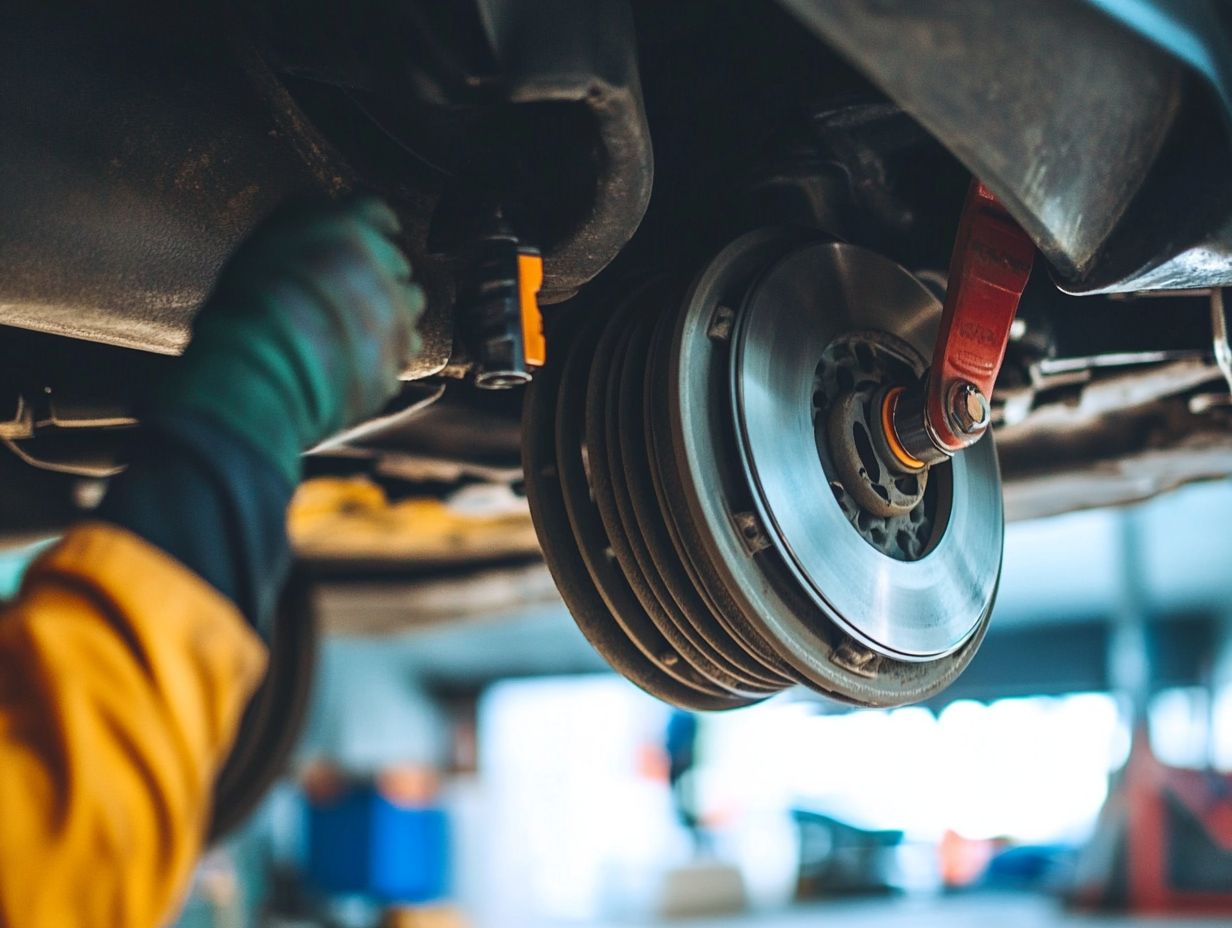
Air filters are essential for maintaining your vehicle’s performance and ensuring good air quality in the truck cab. This directly impacts your comfort and health.
Regular inspections can help identify problems early and promote a strong safety culture among drivers. You ll find various types of air filters in trucks, including HEPA filters that capture tiny particles and pleated filters designed for enhanced airflow.
Make it a habit to check for dirt buildup, tears, or signs of wear. Neglecting air filters can lead to decreased engine efficiency and reduced fuel economy, affecting overall performance.
Clogged filters can also result in poor air quality, contributing to respiratory issues and allergens. Prioritize this often-overlooked aspect of your vehicle for a healthier and more comfortable driving experience.
8. Belts and Hoses
Belts and hoses are essential components that ensure your truck operates smoothly. Regular inspections are necessary to ward off mechanical defects.
Incorporating belts and hoses into your maintenance routines enhances safety and boosts vehicle reliability. Familiarizing yourself with the types of belts, such as:
- Serpentine belts: Power multiple accessories.
- Timing belts: Ensure the engine runs smoothly.
Check for signs of wear, like cracks or fraying, to avoid unexpected failures. Look for leaks or bulges in hoses; these indicate that replacements may be needed soon.
Don t wait schedule your inspections every six months to catch issues early and extend your vehicle’s lifespan.
9. Suspension and Steering
Suspension and steering systems are crucial for vehicle performance and driver control. Regular inspections help catch potential mechanical defects.
These systems work together to provide responsiveness and comfort. During inspections, check for:
- Worn-out bushings
- Damaged tie rods
- Leaking shock absorbers
Don t overlook tire alignment and condition, as misalignment leads to uneven tire wear. Routine maintenance, including lubricating moving parts, is vital for preventing serious issues.
10. Exhaust System
The exhaust system is vital for reducing emissions and ensuring compliance with environmental regulations. Regular inspections help catch potential issues before they lead to violations.
Each part, like the catalytic converter and muffler, works together to minimize harmful emissions. Stay alert for signs of trouble, such as:
- Unusual noises
- Decreased fuel efficiency
- Check engine light
By committing to regular maintenance, including checking for leaks and replacing worn-out parts, you enhance your vehicle s longevity and contribute to environmental sustainability.
Be proactive in your vehicle care to fulfill your responsibility to both your vehicle and the planet.
11. Spark Plugs
Spark plugs are essential for engine performance, impacting combustion efficiency and overall reliability. Conduct regular inspections to identify any issues that could compromise engine efficiency.
When in peak condition, spark plugs facilitate smooth ignition and fuel combustion, improving responsiveness and fuel economy. Signs of wear may include:
- Deposits
- Erosion
- Cracks
Stay alert for symptoms like rough idling, difficulty starting, or reduced acceleration, as these indicate spark plug issues. Proper inspection involves:
- Checking for physical damage
- Ensuring gap size is correct
- Replacing plugs as recommended by the manufacturer
By paying regular attention to your spark plugs, you ensure smooth engine performance and extend your vehicle’s longevity.
12. Radiador y Sistema de Refrigeraci n
El radiador y el sistema de refrigeraci n son cruciales para mantener temperaturas ptimas en el motor. Esto asegura que su veh culo funcione al m ximo y evite problemas mec nicos.
El mantenimiento rutinario y las inspecciones exhaustivas del sistema de refrigeraci n son medidas de seguridad esenciales que ayudan a prevenir el sobrecalentamiento y a extender la vida til de su motor.
Estos sistemas funcionan al circular el refrigerante a trav s del motor, absorbiendo calor y disip ndolo a trav s del radiador. Realice chequeos regulares para detectar signos de desgaste, como grietas o corrosi n, e inspeccione las mangueras en busca de fugas o deterioro.
Realizar un lavado del sistema peri dicamente puede eliminar escombros y prevenir la acumulaci n que podr a afectar el rendimiento. Chequee los niveles de refrigerante con regularidad para detectar fugas temprano, asegurando que su motor se mantenga fresco y eficiente, protegi ndolo de reparaciones costosas m s adelante.
13. Sistema de Aire Acondicionado
El sistema de aire acondicionado es vital para su comodidad como conductor, especialmente durante viajes largos. Su mantenimiento es clave para el cuidado general del veh culo.
Este sistema funciona al circular refrigerante a trav s de varios componentes, como el compresor, el condensador, el evaporador y la v lvula de expansi n, todos trabajando juntos para enfriar el aire en su cabina.
Preste atenci n a signos de problemas, como refrigeraci n insuficiente, ruidos inusuales o olores extra os que salgan de los ventiladores. Estos pueden ser indicadores de problemas potenciales que necesitan su atenci n.
No espere! Las inspecciones regulares pueden ayudarle a identificar problemas menores antes de que se conviertan en reparaciones costosas, asegurando un rendimiento ptimo y su comodidad en la carretera.
14. Condici n Interior y Exterior
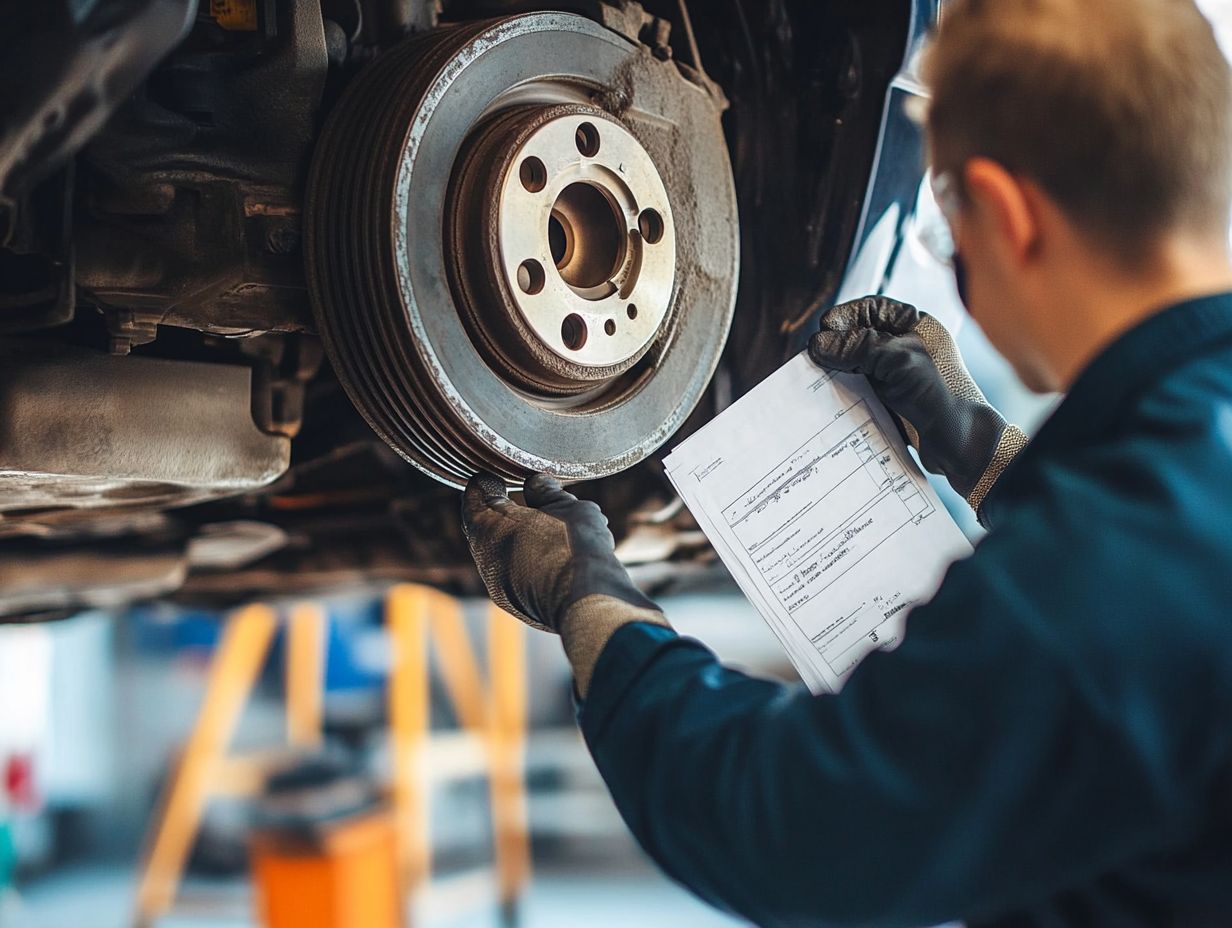
Conservar tanto el interior como el exterior de su cami n no solo se trata de apariencia; tambi n es esencial para la seguridad. Una cabina limpia fomenta la concentraci n del conductor y minimiza distracciones, algo crucial en la carretera.
Las inspecciones regulares le permiten detectar problemas potenciales temprano, ayudando a prevenir violaciones de inspecci n y fomentando una cultura de seguridad. El estado exterior de su veh culo juega un papel significativo en su rendimiento. La suciedad y los escombros pueden interrumpir la aerodin mica y la eficiencia de combustible. Un lavado y encerado exhaustivos no solo mejoran su aspecto, sino que tambi n protegen contra el xido y el da o ambiental.
Para el interior, pasar la aspiradora regularmente, limpiar las superficies y verificar objetos sueltos puede prevenir accidentes. Es recomendable desarrollar un checklist de rutina que incluya:
- Inspeccionar la presi n de los neum ticos
- Verificar los niveles de fluidos
- Evaluar las condiciones de los frenos
Al abordar peque os problemas antes de que se agraven, extiende la vida de su cami n y mejora la seguridad de todos en la carretera.
15. Kit de Emergencia
Un kit de emergencia es una parte esencial del equipo de seguridad de su cami n, asegurando que est preparado para situaciones inesperadas en la carretera. Debe incluir elementos vitales como tri ngulos reflectantes, suministros de primeros auxilios y herramientas para emergencias en su lista de verificaci n de inspecci n completa.
Estos elementos son cruciales no solo para su seguridad personal, sino tambi n para la seguridad de todos en la carretera. Los tri ngulos reflectantes alertan al tr fico que se aproxima sobre su veh culo detenido, mientras que los suministros de primeros auxilios pueden proporcionar ayuda inmediata en caso de lesiones.
Herramientas como una linterna, cables de arranque y kits de reparaci n b sicos le permiten afrontar peque as aver as por su cuenta, reduciendo los riesgos en la carretera.
Revisar regularmente su kit de emergencia es necesario para confirmar que todos los suministros est n funcionales y dentro de sus fechas de caducidad. Esta preparaci n lo mantiene listo para cualquier situaci n que se presente.
The Importance of Regular Car Inspections!
Regular car inspections are vital for vehicle safety. They also help you comply with safety standards and find potential problems before they worsen.
These inspections help create a complete vehicle history report. This report increases your car’s resale value and builds buyer confidence.
Keeping your car in excellent condition ensures its longevity. It also boosts your financial returns when you sell.
What Are the Potential Risks of Skipping a Car Inspection?
Skipping a car inspection poses serious risks. It increases the chance of mechanical defects, which could lead to accidents.
Neglecting inspections can expose you to legal issues. Many places require proof of regular check-ups to follow safety regulations.
The risks extend beyond you. Unsafe vehicles can lead to severe liabilities and impact your driving record.
It’s crucial to get timely inspections. This is not just good practice; it s your responsibility.
How Often Should a Car Be Inspected?
The frequency of inspections depends on local safety regulations, usage, and manufacturer recommendations. Regular inspections are essential for keeping your vehicle in top shape.
Compliance manuals and inspection checklists outline how often various components should be evaluated.
If you operate a commercial vehicle with heavy use, you may need inspections as often as monthly.
Conversely, if you drive a personal car less frequently, you might qualify for inspections every six months or even annually, depending on state laws.
Following the manufacturer s guidelines ensures critical parts, like brakes and tires, are regularly checked, enhancing your vehicle’s reliability and safety.
Neglecting these timelines could lead to expensive repairs, so it s crucial to stay updated on regulations that apply to your vehicle type.
What Are the Benefits of a Professional Car Inspection?
Professional car inspections provide numerous advantages, offering expert insights that can identify mechanical defects often missed in DIY checks.
These inspections ensure compliance with safety standards while leveraging advanced safety technology for detailed reports on your vehicle’s condition.
Entrusting a trained technician means you benefit from specialized tools and equipment that are usually out of reach for the average car owner.
This expertise allows them to detect subtle issues that could develop into major problems later, ultimately saving you from costly repairs.
The peace of mind from knowing a professional has thoroughly assessed your vehicle can significantly reduce the anxiety of unexpected breakdowns.
This enables you to drive confidently, fully aware of your car’s condition and ready for the road ahead!
What Are the Commonly Overlooked Items in a DIY Car Inspection?
During a DIY car inspection, you might overlook important items, which can lead to serious car problems and compromise your safety. Being aware of the top 5 warning signs during a car inspection can help you avoid these costly mistakes.
Including key components in a complete checklist is essential for maintaining your vehicle’s performance and demonstrating your commitment to routine safety measures.
You might often miss checking engine fluid levels, which can impact everything from lubrication to temperature regulation.
The condition of your brake components, such as pads and rotors, is crucial for ensuring safe stopping distances and maintaining control of your vehicle.
Don’t forget to evaluate tire conditions. Checking tread depth and air pressure is vital for optimal traction and fuel efficiency.
Creating a detailed checklist and scheduling regular inspections will be extremely helpful. Consider utilizing a digital app or setting reminders on your phone; these tools can keep you focused on these essential items during each inspection.
Frequently Asked Questions
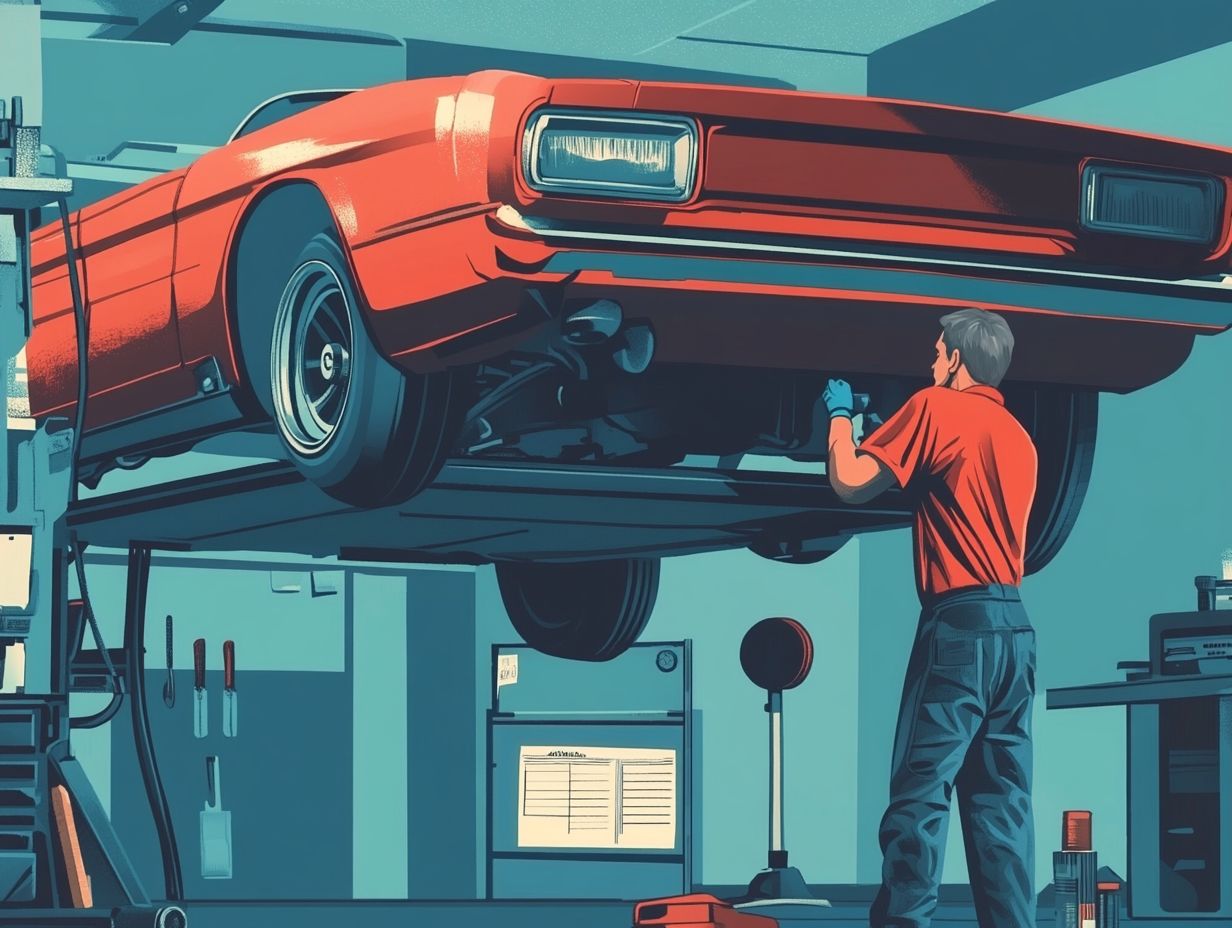
What items do people frequently forget to check during a car inspection?
Some of the most commonly overlooked items in a car inspection include the tires, windshield wipers, lights (both interior and exterior), and the battery. To ensure you’re thorough, be aware of the top 7 mistakes to avoid during a car inspection.
Why are these items important to check during a car inspection?
These items are important to check because they directly affect the safety and functionality of your vehicle. Ignoring them can lead to potential accidents or breakdowns on the road.
How often should these items be inspected?
These items should be inspected at least once a month or before any long road trips. It’s also a good idea to have a professional mechanic perform a thorough inspection every 6 months to a year.
What are the consequences of neglecting these items?
Neglecting these items can result in costly repairs, decreased fuel efficiency, and potential safety hazards on the road. It can also lead to your car failing its next inspection.
How can I remember to check these items during a car inspection?
One way to remember to check these items is to create a checklist and keep it in your car. You can also set reminders on your phone or calendar to perform regular inspections.
What can I do if I don’t feel confident checking these items myself?
If you don’t feel confident checking these items yourself, it’s best to take your car to a trusted mechanic for a professional inspection. This will give you peace of mind knowing that your car is in good condition.

